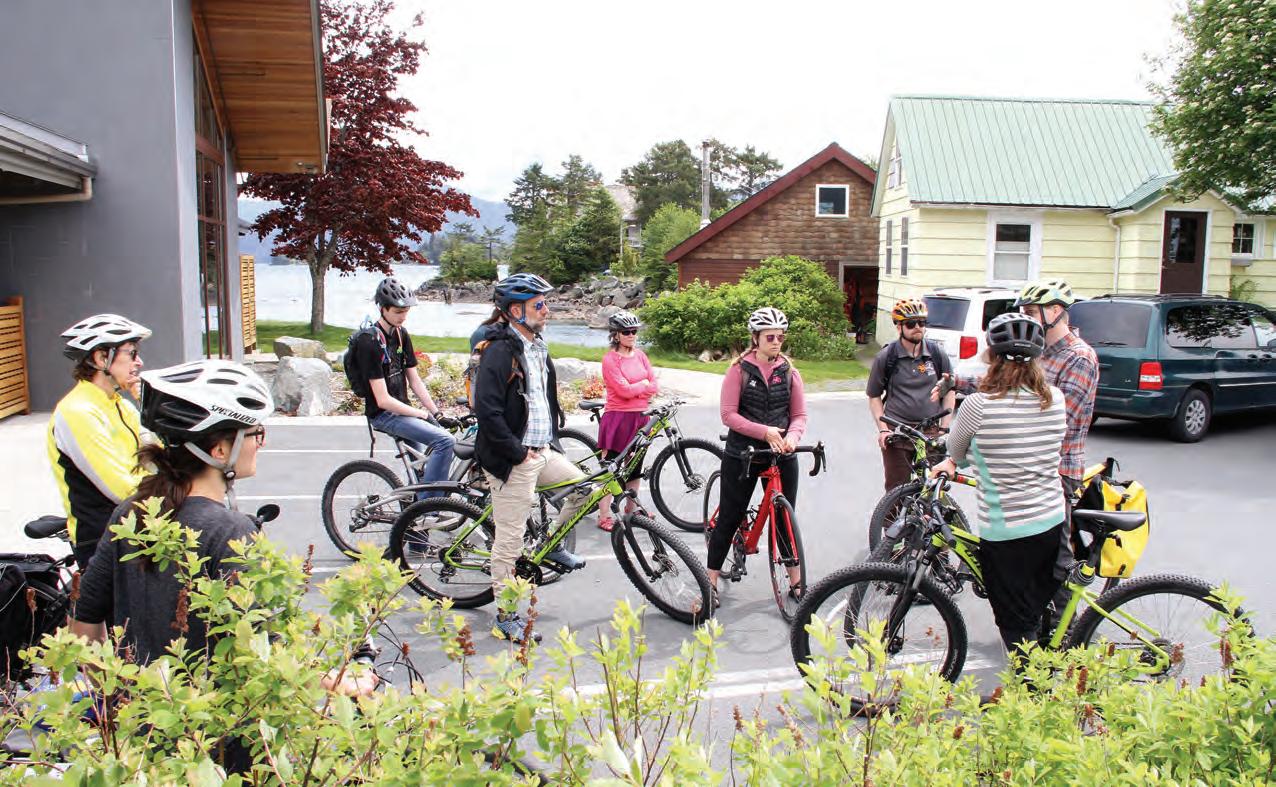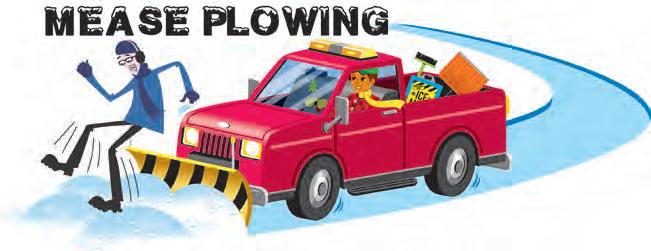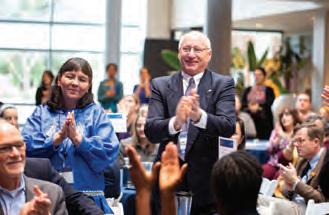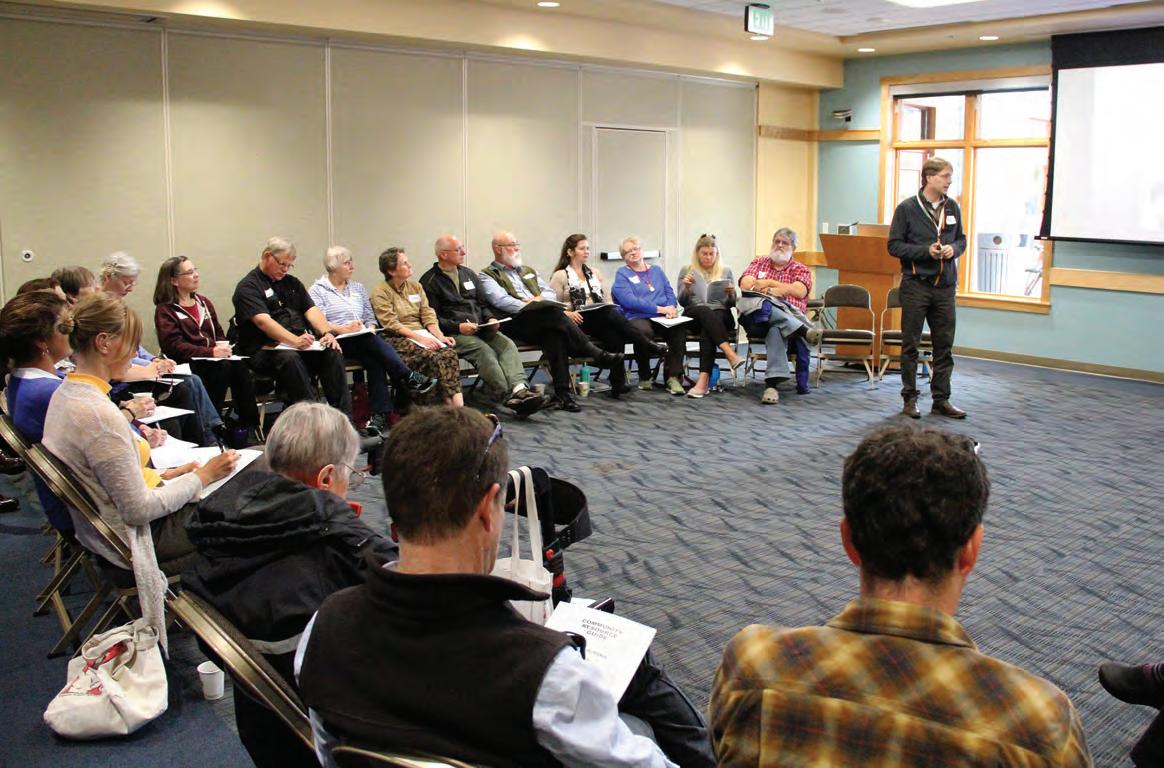
10 minute read
Dr. Harry Yuan: Kids and sleep
Children need good sleep too
By Dr. Harry Yuan I t is common knowledge that adequate good-quality sleep is important in the development of children.
Advertisement
Yet childhood insomnia is the most common sleep complaint from parents. Although certain sleep disorders may cause insomnia, the difficulty in initiating or maintaining sleep may be due to poor sleep habits or suboptimal sleep environment. Getting adequate sleep is vital and translates to better quality of life for children of all ages.
Good sleep habits are important. They include bedtimes, wake times, types of activities around bedtimes, sleep schedules, sleep environment, and diet. Good sleep habit is achieved by optimizing behaviors that promote sleep and avoiding those that sabotage it. Training the mind to recognize bedtime is one method of promoting sleep. For example, having the same bedtimes and wake times daily help our bodies synchronize our internal clocks (circadian rhythm) with the environmental clock (time) and prepares us to fall asleep as bedtime approaches. Similarly, having the same bedtime routine nightly also signals our mind that sleep is approaching.
Other factors that can influence the ability to fall asleep are the environment and certain daytime activities. Ideally, the room should be quiet and dark. A room temperature on the cooler side (between 65-70 degrees Fahrenheit) with blankets to stay warm is optimal. Avoid using the bedroom for any other activities aside from sleeping. Screen time on any electronic devices within two hours of bedtime exposes the eyes to an excessive amount of light and should be avoided. Exercise during the day can promote better sleep, but it may disrupt the ability to fall asleep if done within four hours of bedtime. Caffeine can exert its waking effect up to six hours after ingestion and should be avoided later in the day.
The American Academy of Pediatrics has stated that adequate sleep in children leads to improved behavior, better learning, and higher quality of life. Children with inadequate sleep are at increased risk for obesity, depression and hypertension.
Therefore, the AAP has endorsed the recommendation from the American Academy of Sleep Medicine regarding sleep hours for different age groups. (The listed hours are per 24 hours including naps):
• Age 4 months to 12 months: 12 to 16 hours
• Age 1 to 2 years: 11 to 14 hours • Age 3 to 5 years: 10 to 13 hours • Age 6 to 12 years: 9 to 12 hours • Age 13 to 18 years: 8 to 10 hours Aside from certain sleep habits and sleep environment, another common cause of insomnia in children is obstructive sleep apnea.
Unlike adults, children with obstructive sleep apnea may have difficulty falling asleep and have frequent nighttime awakenings as well as symptoms similar to attention deficit and hyperactivity disorder like difficulty focusing, poor school performance and hyperactivity. In fact, up to 25 percent of children diagnosed with ADHD may actually have undiagnosed poor sleep that is manifesting the ADHD symptoms. It is important to treat obstructive sleep apnea not only to address the presenting symptoms but also to prevent complications that can develop in the future.
Dr. Harry Yuan, MPH, FCCP, FAASM, is pediatric medical director at the Alaska Sleep Clinic.
League of American Bicyclists certified instructor Elle Steele of Sacramento (striped shirt on right) gathers cyclists behind the Sitka Public Library to chat while they are participating in a LAB Smart Cycling training held as part of the inaugural Alaska Walk and Bike Conference in June 2019. Courtesy of Charles Bingham
Community wellness
Sitka’s ‘culture of health’ a result of its holistic approach
By Erin McGroarty Alaska Pulse A small community in Southeast Alaska is putting health first. With only 14 miles of paved roads and a population of just over 8,640 people, its size and remoteness –– only accessible by ferry or air –– hasn’t deterred the community of Sitka from making massive strides in recent years to make public health its No. 1 priority. As you look around the community perched on the coast along the Alaska Panhandle, examples of its work toward a general sense of community wellness is apparent. The small coastal town has recently been furnished with a new series of herring-shaped bike storage racks –– an homage to the community’s coastal location and culture and the most recent installment in Sitka’s push to become more bike-friendly.
A 12-foot by 24-foot mural –– painted by members of the community –– hangs on the side of Blatchley Middle School. The mural sports the message “Choose Respect,” a theme in the community’s larger scale initiative to bring awareness to domestic violence and bullying.
The Sitka Health Summit Coalition –– the organization behind these community projects –– began as a collaborative community endeavor in 2006 in an effort to bring community members together with the larger goal of achieving high levels of community-wide health.
Now, Sitka has gained national recognition for its efforts. The coalition has been awarded the Robert Wood Johnson Foundation 2019 Culture of Heath prize along with a $25,000 grant to put toward community wellness projects. Holistic approach Doug Osborne is a health educator with the Sitka Alaska Regional Health Consortium. He’s also a member of the Sitka Health Summit Coalition, which applied for the award on behalf of the town.
Joan O’Keefe of Southeast Alaska Independent Living Inc. and Lynne Brandon of Sitka Trails Works survey the construction of the Sitka Community Playground during a community build day in June 2018. Building an American Disabilities Act-compliant playground was a Sitka Health Summit community wellness project in 2011 and 2015 Courtesy of Charles Bingham

Osborne described Sitka’s approach to a healthy community as “holistic.”
“It’s definitely a broad approach,” he said. “We take a lot of different factors into consideration.”
These can range from fitness and nutrition to mental health awareness and emotional education.
“Our model is mind, body, social, emotional,” Osborne said. “It includes it all.”
The coalition was born with the goal of building bridges across different health sectors in an effort to foster a sense of partnership for better general community health, Osborne explained. The group consists of nine organizations, including local nonprofits as well as Sitka’s two central health groups –– Southeast Alaska Regional Health Consortium, the region’s tribal health organization, and Sitka Community Hospital, owned by the city.
“It’s different organizations that come together,” Osborne said. “We’re a crosssector collaboration with the central ambition of promoting a healthier community for everyone.”
In addition to year-round attention to the overall sense of community health
in Sitka, the coalition hosts an annual planning day during which community members gather to formulate collaborative health goals for the coming year. These goals can be small and easily accomplished in a year’s time or longform and ongoing like Sitka’s push to increase biking and walking opportunities to members of the community. At first that began with the simple task of ensuring bike lanes on community roads. Now, years later, bike lanes are taken into consideration when roads are maintained, repaved or when construction is done. Walking trails around
Prevent Falls in the Driveway and Walkway! Call Mease Plowing at 1-336-478-7393. Let’s have a healthy New Year!



Above, coalition members Vera Gibson and Loyd Platson applaud at the RWJF Culture of Health Prize event in New Jersey. Copyright Flynn Larsen. Photo courtesy of the Robert Wood Johnson Foundation.

Left, Sitka Local Foods Network board members Amanda Anjum and Nina Vizcarrondo (the Sitka Farmers Market manager) with volunteer Hannah Green during an August 2019 Sitka Farmers Market. 2019 was the 12th season of the Sitka Farmers Markets. Courtesy of Charles Bingham
the island were another point of focus with community members working to expand and maintain an extensive trail system.
A smaller –– but equally important –– goal, Osborne noted, was work done last year to install the community’s first and only ADA (American with Disabilities Act) compliant playground.
Both of those examples help community members stay active, providing convenience for those wishing to maintain a high level of activity in day-to-day life. Creation of Sitka’s Cloud shelter, a free after-school drop-in center for teens, was a different type of goal. The Cloud opened just 10 months after the coalition –– with the help of the community –– set the idea in motion. It takes a community Community members are always included in decision-making and goalsetting.
Sometimes, as in the case of coalition member Chandler O’Connell, being an active member of the community can lead to involvement with the coalition as a group member.
O’Connell was born and raised in Sitka, so the area is held deep in her heart. She moved away briefly as an adult, joining the coalition about three From left, Julie Morita, Chandler O’Connell, Vera Gibson, Tina Bachmeier, Holly Marban, Doug Osborne, Loyd Platson, and Sheri Johnson on Nov. 12, 2019, at the Robert Wood Johnson Foundation Culture of Health Prize Celebration and Learning Event in Princeton, N.J., presenting and accepting Sitka’s 2019 RWJF Culture of Health Prize award. Morita and Johnson are with the RWJF, while the others are part of the Sitka Health Summit Coalition. Copyright 2019 Flynn Larsen. Photo courtesy of the Robert Wood Johnson Foundation.

years ago following her return to the community.
She works for the Sitka Conservation Society as a community catalyst, helping to organize and direct local community initiatives surrounding sustainability. “Our connection over the years has seen the Sitka Conservation Society lending support for a number of the goals chosen by the community. Because of the connection between the organizations, it seemed like a natural bridge for me,” she said.
The Sitka Conservation Society holds
Doug Osborne introduces Supporting Our Seniors Workshop in September 2019. One of the two 2018 Sitka Health Summit community wellness projects was to increase senior housing and services in Sitka, and this event was part of that project. Photo courtesy of Charles Bingham.

the mission of protecting the Tongass National Forest, located near Sitka, as well as building a sustainable community. The idea of sustainability is wide-ranging, O’Connell noted, and has woven its way through many of the coalition goals over the years.
One of the projects, identified by community members at the coalition’s annual woo.cheen –– meaning “working together” in Sitka’s native Tlingit language –– meeting was the nutritional health of the community’s schoolchildren.
This sparked the Fish to Schools program, which, in collaboration with local fishermen, provides one locally wildcaught fish meal a week to the community’s public schools.
“This was a great collaboration because it brought fresh fish to local schools so kids in the district can have a fish lunch but also so the kids can learn about fish, fishing and our community
at large,” O’Connell said.
The Fish to Schools program has been running for eight years now. Passion for wellness Food security and sustainable food practices have led to a number of other initiatives over the years including the Sitka Farmers Market and a program called Sitka Kitch, which originally began as a community kitchen where individuals could take food education classes and learn skills connected to nutrition and subsistence.
Ideas can come from anyone in the community and have ranged far in scope over the years.
As far as the $25,000 in prize money, O’Connell says the coalition is looking to the people it serves for ideas on how to spend the money.
“We’re looking for the ideas to come from the community itself,” she said. “So now until Feb. 14 we will be collecting ideas through an online link and in person suggestion and outreach to different community sectors to collect ideas.
For O’Connell, a deeply held passion for health and wellness harkens back to the larger goal of a thriving community. “This includes the economy for sure,” she said. “But also environment and people. All three of those are needed for a health and thriving community for all individuals.”
The challenge over the years has been a welcome one, O’Connell said.
“I see health pretty broadly,” she said. “It’s the idea of building a culture that is able to think big about social determinants that make us thrive or struggle. It’s collective action and trying new things. Especially in rural Southeast, we face unique challenges and we need to work together.”




